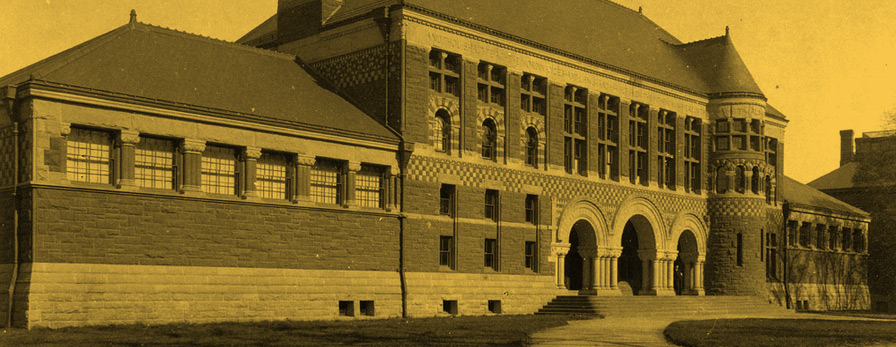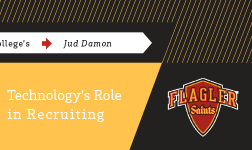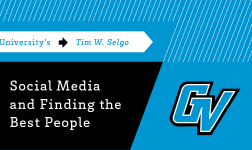Athletics Director
University of Nevada Las Vegas.
Two new recently released studies sought to explore the relationship between coaching and performance, to determine whether it is necessarily reasonable to expect a new coach to outperform his predecessor. The first study, from Social Science Quarterly, looked at teams who replaced their head coach between 1997 and 2010 due to unmet expectations. The study examined teams that were statistically similar, with the exception of a coaching change—the results, however, showed a new leader did not always lead to improved on-field performance.
The second study, from two researchers at Towson University, and published in the Journal of Sport and Social Issues, investigated the 25 highest paid coaches in college sports to see if those coaches won more games than their peers—the study did not find evidence that pay and performance are correlated.
The studies were highly cited in several prominent news stories recently, and Winthrop Intelligence was intrigued by the question the study posed for the conclusion of the college football season. But perhaps the focus should be broadened to examine the climate and needs during a head football coach’s hire. It seems that because the labor market for head coaches is finite, and because they perform in a competitive market (measured in W-L), the negotiating dynamic can lead to contracts whose terms are longer than optimal for athletic programs (in the case of coaches who underperform over time) and whose severance obligations can be substantial.
So why then do ADs make a head football coaching change? What is the larger equation at play, beyond wins and losses and the statistically proven research?
In this sitdown with Jim Livengood at UNLV, we sought to unpack the elements that lead to change coaches—for both dismissals and hires —for ADs who are aware of the costs: severance, coaching search fees; player distraction and recruiting impact; and media criticism.
Often scrutiny and second guessing—by the media, by your institution, and now researchers—is heaviest at the time of a firing rather than at the time of a hire. What aspects (ticket sales, fund raising, recruiting) of the process does the media not see?
I’ve been in Division I for 32 years, was in the Pac 10 and 12 for 24 years, and have been at UNLV now for 3. I’ve hired a lot of coaches—football, basketball, and many others. In my experience, the most telling aspect of hiring coaches is that there is no art or science involved. The studies are very interesting. That’s great work. But the irony is that every school is a little bit different, in some cases very different. The reality that everyone is looking at is: Can a coach win? And if a coach won before, it doesn’t necessarily mean that coach will win again.
I come from a coaching background, I was a high school coach back in the very early days. But even back then there was a 3-5 year window for winning. Now there’s an immediacy, success must be overnight. It’s not even what have you done for me lately, but what are you doing right now. There’s an impatience. But most schools, UNLV included, are great about emphasizing academics and all the peripherals that are essential in student athletics.
But now, so much of the focus in our society is on winning. And, in truth, far more emphasis is placed on why a team, coach, or individual lost. There are so many cooks in the kitchen today. And whereas it once was: To be victor goes the spoils; now we analyze and fixate on what the other team didn’t do—why people lost—and seldom focus on the good work of those who won. There’s a degree of sadness in that.
We’re trying to provide a great collegiate experience for our students and student athletes. The real goal is on academic, athletic, and social experience for these individuals during the short time between 18 and 22 when these students are with us. There is only a limited window for these students, and the friendships and experiences they will take away from their time here. It’s the experience for those students that’s most important.
Seven NFL coaches were just released. A lot of coaches in NCAA were fired after their second year, some after just their first. And yet there’s very little patience and very little understanding of what goes into winning. There are coaches now who are fired after winning a championship just two years ago.
Something has changed culturally. The old adage, we’ve met the enemy and it’s us—it’s true. By providing such great entertainment, we have, in a way, created a monster. College sports are great entertainment, but it means that there are now two columns—wins and losses. And making mid-season changes, making a change after only a handful of games, it happens all the time in the NFL, MLB, the NBA.
The expectation is that you will win immediately. By creating a culture of winning, that culture demands to be fed. In Tuscaloosa, what will be the expectations in Alabama next year? What are the expectations after winning? Only more winning. But there are no guarantees in these or any other games. In mid-major basketball, with just a few good players you can have a very successful team, but that creates an expectation of winning. It demands continuance.
Given the dollar amounts in play to fire a coach, then hire a new coach, what process do you utilize to examine the new coach’s ability to have more success than their predecessor?
There are many ways to evaluate coaches. In revenue generating sports, it’s expected that those programs fund not only pay for themselves, but for all others. The only criteria for evaluation is track record. And so it can be a leap to hire a coordinator. For example, Charlie Strong in Louisville. You never know how it will work out. If the coach is successful, it can encourage a program to go that direction again, but if a school gets burned, it will likely not take that avenue next time.
Coaches must be so multifaceted, almost like a doctor. A coach needs to be a great communicator, comfortable in the community, adept at fund-raising, an ambassador for the institution. And it’s a 24/7, anytime, anywhere, on-call job. You’re expected to do it all. Coaches, and athletic directors too, get calls at home and it’s quite natural that the caller doesn’t realize that there have been dozens of calls received just that day.
There are so many aspects that go into evaluating coaches. Wins and losses, disciplinary issues, attendance, academics, recruiting. A little patience can go a long way for a coach, but the honeymoon period is very, very short now. And sometimes a coach might need just one year. But patience is rarely perceived as a virtue.
So that patience is also now, in a way, built into contracts. Have there been problems in recruiting, have they had trouble filling seats, have they been strong academically? These are the questions we’re asking ourselves. Five years says you really believe in a coach—it sends the message to the fans, the donors, alumni—we believe in this person, that it’s not a question of if, but when for us now. We have to have this belief, or we’d never hire anyone. But the pressure is just incredible.
In medicine, one rarely second guesses the physician because the general public doesn’t have the same level of expertise. If a team doesn’t convert on a third down, someone who doesn’t know whether a football is round or oblong, often believes that they know much better than the experts.
Also, communication is so highly viral today. Everything said can be sent around the world in a moment. Nothing is kept under wraps, and that creates a great deal of misinformation that is difficult to dispel. In the hiring process, a very tragic thing occurs when a coach, whom everyone is excited about, isn’t even believed to be a first choice because there were so many names bandied about in the media prior to the hiring.
The impatience can be contrary to the nature of an athletic director’s job. The immediacy, the need to know everything immediately, has changed things. But that’s the world and we all work under these conditions. You can’t complain about it. You have to adapt and thrive.
Data is important. For example, Win AD allows us to do some real comparisons and quantitative analysis. Those are facts. We like facts.
And it’s funny, in the old days, after coaches’ conventions, each coach thought that every other coach was doing better than they themselves were. No one wants to think that they’re at the end of the totem pole and so it turns into a game of telephone. The information is amplified and distorted each time. Now, most of that data we can get from Win AD and the wonderful service you folks provide. The facts are important. That’s information.
When determining the length of a contract for a new coach, how do you balance the need for long term job security (recruiting perception) against a possibly shorter timeline to get results on the field.
Well, the length is typically five years. Sometimes three. Interestingly, there’s no profession that does a good job at this, but during interviews and negotiations for salary and compensation—we don’t talk about if it doesn’t work out. The exciting times during the hiring process, discussion of the exit strategy is left out. It’s taboo in all industries to talk about these issues.
A press conference to announce the hiring of a new coach is the most exciting thing in the world and each decision is touted as the greatest decision ever made. Each and every time. And search committees tend to turn into selection committees. If the search works out, everyone in the free world claims to have been involved. If it doesn’t work out, no one was responsible. There’s room on the bandwagon for everyone during good times. The bandwagon gets pretty lonely when expectations are not met.
And, just the same as every other industry, during negotiations, in contracts and compensation, we all want raises during good years, but no one suggests taking a salary cut when they don’t accomplish what they set out to do.
Most importantly, I would simply say that the hiring process is probably the most inexact art and/or science I know of. It’s just very difficult to predict the future—a change of scenery sometimes turns everything around, but success doesn’t always transfer. And yet it’s all we have to go on.
Researcher E. Scott Adler on Coaching Change
Associate Professor,
Colorado University Boulder.
Dr. Adler, whose recent study was published in Social Science Quarterly (and cited by the New York Times), was kind enough to speak with Winthrop Intelligence and provide some additional thoughts on coaching change.
No doubt, the pressure on big time college football coaches (as well as other intercollegiate athletics coaches) to demonstrate overwhelming success on the field of play, as Athletic Director Livengood discusses, has grown tremendously in recent years. However, none of this magnified impatience changes the fundamentals that underlie the process of program development. The reality is that coaches need time to develop a system – this means fitting into an already functioning athletic department, understanding a university culture and its academic expectations, putting together the right set of assistant coaches, building a recruiting network, etc. Nothing about the process will ever compress the period of time it takes for a program to be reconstituted under a new coach. Yet many stakeholders outside of academe are not conscious of the complexity of this process.
As impatience increases, so will the frustration. Our research demonstrates that replacing football coaches, particularly those whose teams have recently shown less-than-stellar performance on the field, is likely to result in a short-term decline in performance as compared to those programs that did not replace their coach. This, therefore, suggests that short time horizons for positive results could very well create a cycle of continued disappointment.
Yet, it is precisely the athletic directors and academic administrators who need to withstand the pressures coming from both within and outside the university when a coach is not meeting expectations. Calls to replace a coach often originate from those with little knowledge of the day-to-day team and university operations or appreciation of the realities of intercollegiate athletics. Too often these declarations for a coach’s ouster, and often the ultimate decision on his/her disposition, are driven by myths and hunches.
What can assist key decision-makers in their judgment to keep or replace a coach is more data and research regarding the causes and consequences of program success both on and off the field. We need a better understanding of what is required to build lasting program fundamentals, of the linkage between academic and athletics success, and what are realistic expectations with respect to both wins and losses and the finances of athletics programs.






